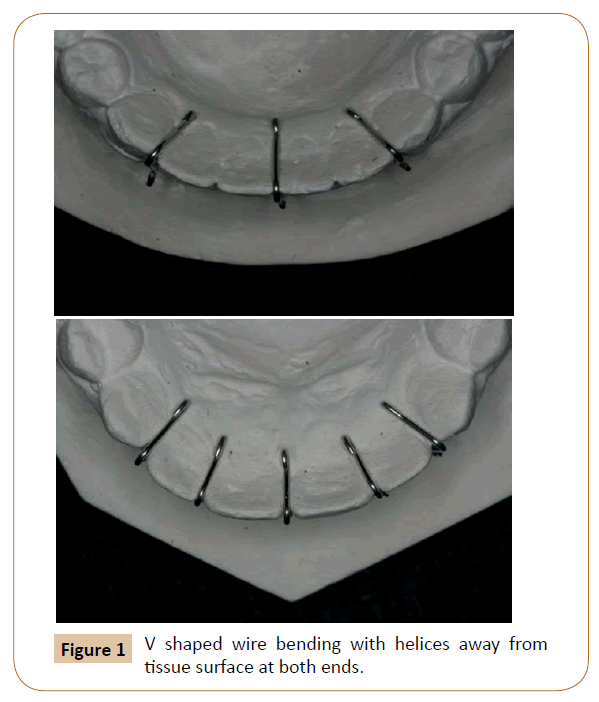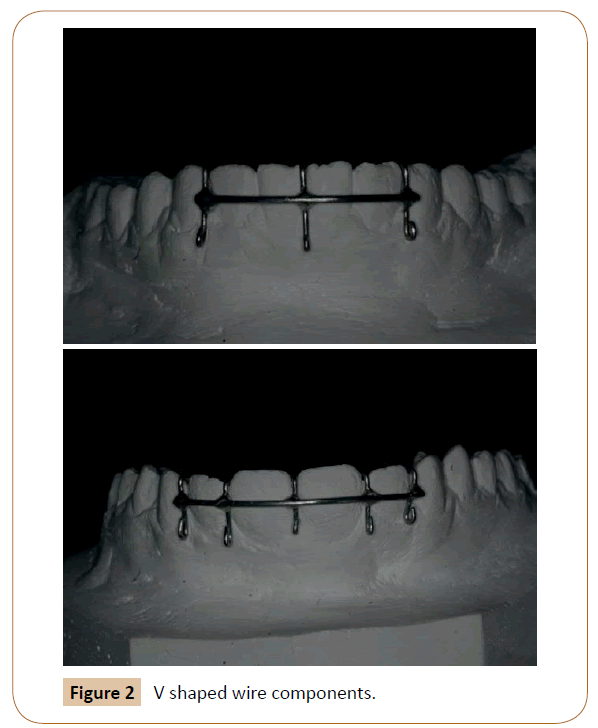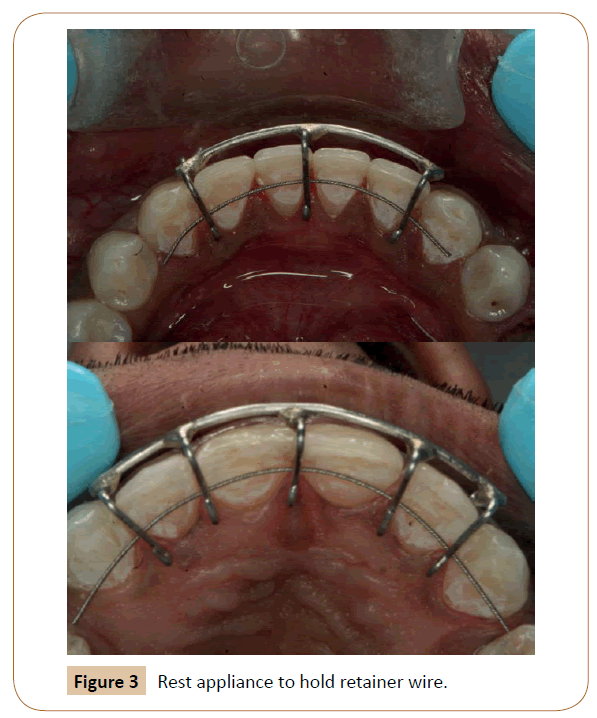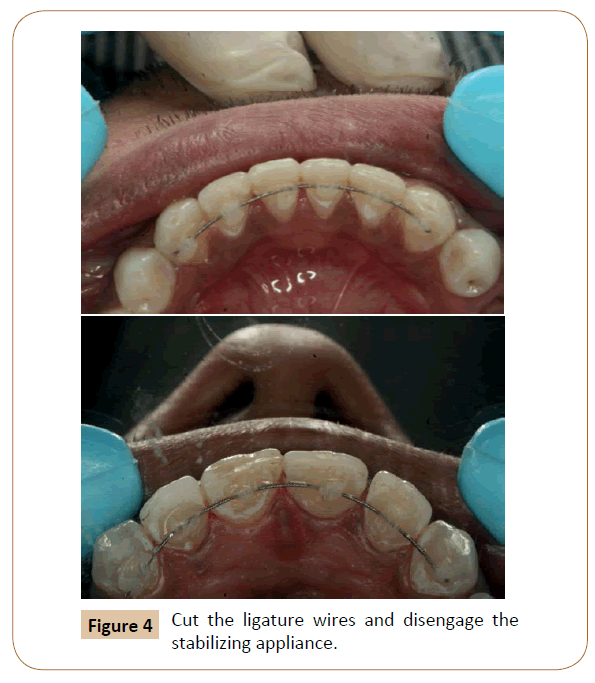Rest Appliance: Retainer Stabilizing Appliance
Abhishek Bansal
DOI10.21767/2469-2980.100037
Abhishek Bansal*
Department of Orthodontics, Vaidik Dental College and Research Center, India
- *Corresponding Author:
- Abhishek Bansal
Senior lecturer, Department of Orthodontics
Vaidik Dental College and Research Center
Nani Daman, Daman and Diu 396210, India
Tel: +91-9844243394
E-mail: ashi142002@yahoo.co.in
Received Date: October 29, 2016; Accepted Date: February 13, 2017; Published Date: February 17, 2017
Citation: Bansal A. Rest Appliance: Retainer Stabilizing Appliance. J Orthod Endod. 2017, 3:1. doi:10.21767/2469-2980.100037
Copyright: © 2017 Bansal A. This is an open-access article distributed under the terms of the Creative Commons Attribution License, which permits unrestricted use, distribution, and reproduction in any medium, provided the original author and source are credited.
Introduction
Relapse is a major focus of interest after orthodontic treatment, which has drawn attention of many orthodontists since the beginning of Orthodontic era in Dentistry. Few malocclusions are self-retaining but on the other hand various malocclusions such as severe rotations and extraction cases require fixed retention. Fixed retainers are the bonded retainers attached on the lingual surface of the teeth after de-bonding the labial appliance. Sometimes breakage of retainer is observed which require repair but bonding of new lingual retainer is difficult [1-3]. In the past, different direct and indirect fixed bonded retainer techniques have been evolved where various diameter and alloy of wires were used [1]. The indirect method requires an elaborate laboratory procedure for holding the retainer wire on teeth surface for bonding [4-7]. Till now, many methods using finger, dental floss, orthodontic elastics ligatures, and others have been developed to hold the retainer wire but these methods have certain shortcomings [8-14].
To overcome these problems, a new appliance which we named “REST APPLIANCE” have been developed, the procedure is as follows:
Fabrication of Rest Appliance
Prepare a maxillary and mandibular working model. With 0.7 mm round SS wire, prepare V shaped wire bending with helices away from tissue surface at both ends on working models as shown in Figure 1.
Prepare labial wire assembly with 0.9 mm round SS wire and soldering has been done with V shaped wire components as shown in Figure 2.
Procedure for bonding
1. After debonding, take an impression of the arches and prepare a working model.
2. The twisted 0.010'' ligature wire or multistrand wire is adapted along the lingual surface of the anterior teeth on the working model.
3. Perform pumice polishing of the lingual surface of teeth on which retainer is to be bonded.
4. Adjust and check the position of retainer wire (twisted 0.010'' ligature wire or multistrand wire) in mouth, if necessary.
5. Place the REST APPLIANCE to hold retainer wire (Figure 3).
6. Retainer wire is then adhered using composite, preferably flow able composite.
7. Light curing for 20 s from both mesial and distal side is done.
8. Cut the ligature wires and disengage the stabilizing appliance (Figure 4).
9. Post insertion instructions are delivered to the patient.
Advantages
1. It is useful in the cases that require bonded retainer.
2. Useful in cases of broken retainer.
3. When compared to other methods, this appliance holds the wire well adapted at each contact point.
4. The material and time consumption is less.
5. The appliance can be universally used, and also can be custom fabricated.
6. The appliance is easy to fabricate.
7. As the transfer trays are not required, the visibility of the operator is not obstructed.
8. All teeth can be etched and bonded with adhesive simultaneously.
9. This appliance can also be used in other departments like periodontics for splinting of periodontally compromised teeth.
References
- Bearn DR (1995) Bonded orthodontic retainers: A review. Am J Orthod Dentofac Orthop 108: 207-213.
- Kaplan H (1988) The logic of modern retention procedures. Am J Orthod Dentofac Orthop 93: 325-340.
- Zachrisson BU (1986) Excellence in finishing. J Clin Orthod 20: 460-482.
- Chen RS (1978) Prefabricated bonded mandibular retainer. J Clin Orthod 12: 788-789.
- Hobson RS, Eastaugh DP (1993) Silicone putty splint for rapid placement of direct-bonded retainers. J Clin Orthod 27: 536-537.
- Ferguson JW (1987) Multistrand wire retainers: An indirect technique. Br J Orthod 15: 51-54.
- Corti AF (1991) An indirect-bonded lingual retainer. J Clin Orthod 25: 631-632.
- Rubenstein BM (1976) A direct bond maxillary retainer. J Clin Orthod 10: 43.
- Carter RN (1978) Simplified direct-bonded retainer. J Clin Orthod 12: 221.
- Zachrisson BU (1977) Clinical experience with direct-bonded orthodontic retainers. Am J Orthod 71: 440-448.
- Zachrisson BU (1982) The bonded lingual retainer and multiple spacing of anterior teeth. J Clin Orthod 17: 838-844.
- Eade P (1980) A modified direct bond lingual retainer technique. Br J Orthod 7: 125-126.
- Meyers CE, Vogel S (1982) Stabilization of retainer wire for direct bonding. J Clin Orthod 16: 412.
- Vibhute PJ (2009) Two new methods for direct bonding ‘lingual retainers’. J Indian Soc Pedod Prevent Dent 27: 111-115.
Open Access Journals
- Aquaculture & Veterinary Science
- Chemistry & Chemical Sciences
- Clinical Sciences
- Engineering
- General Science
- Genetics & Molecular Biology
- Health Care & Nursing
- Immunology & Microbiology
- Materials Science
- Mathematics & Physics
- Medical Sciences
- Neurology & Psychiatry
- Oncology & Cancer Science
- Pharmaceutical Sciences




